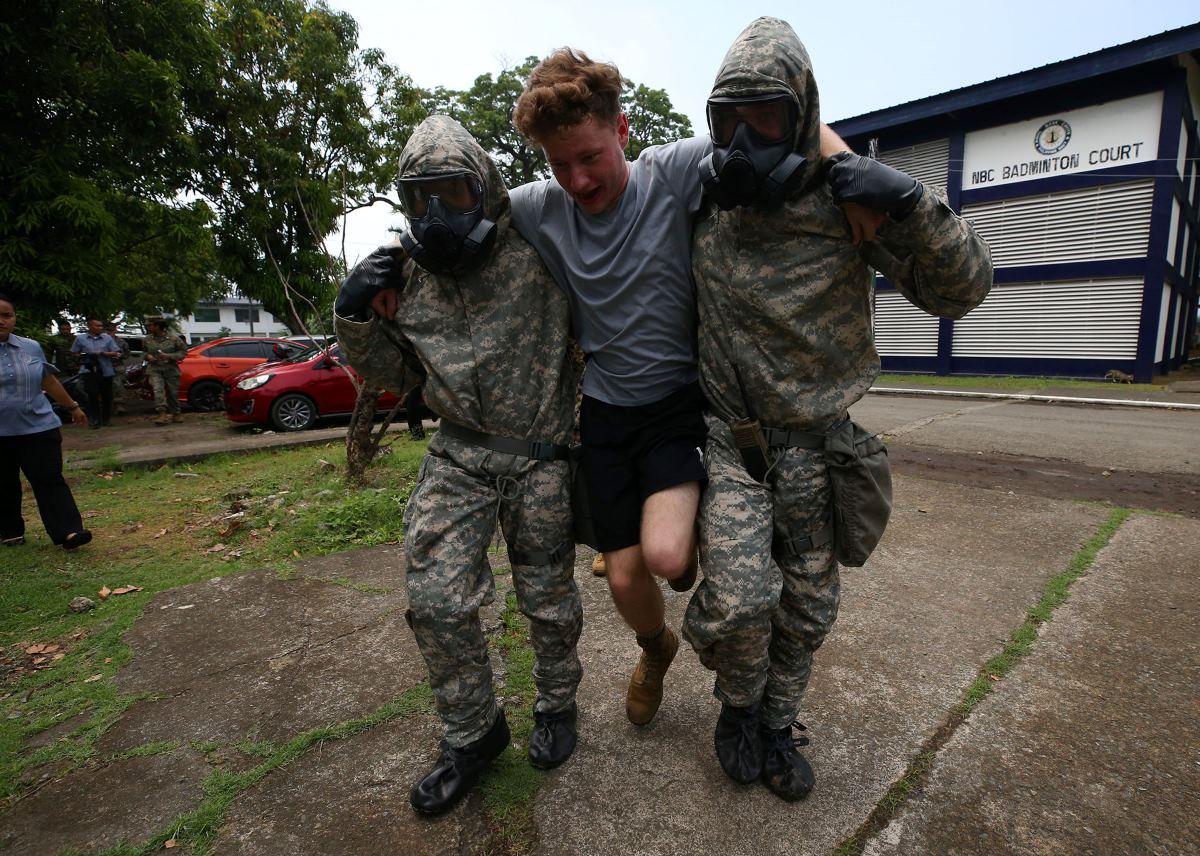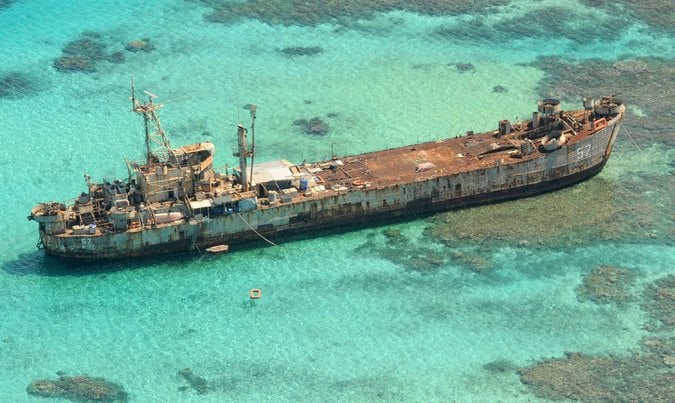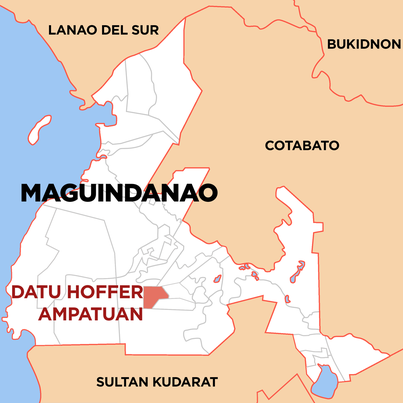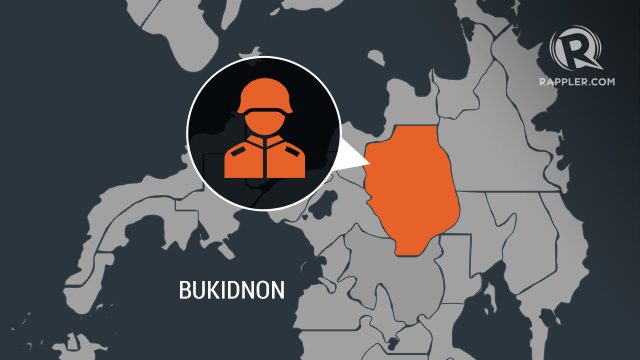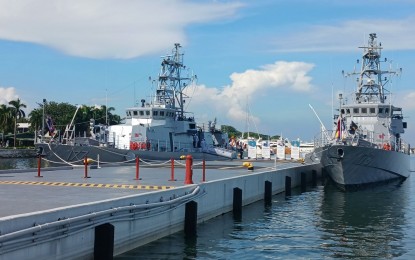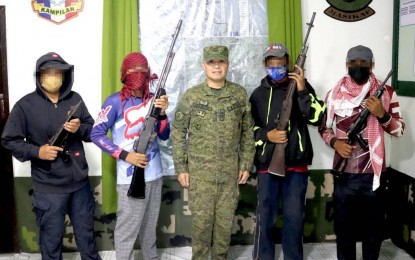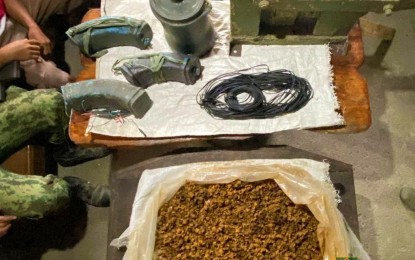Posted to War on the Rocks (Sep 11, 2023): Time to Build Combined Forward Operating Base Sierra Madre (By Blake Herzinger)
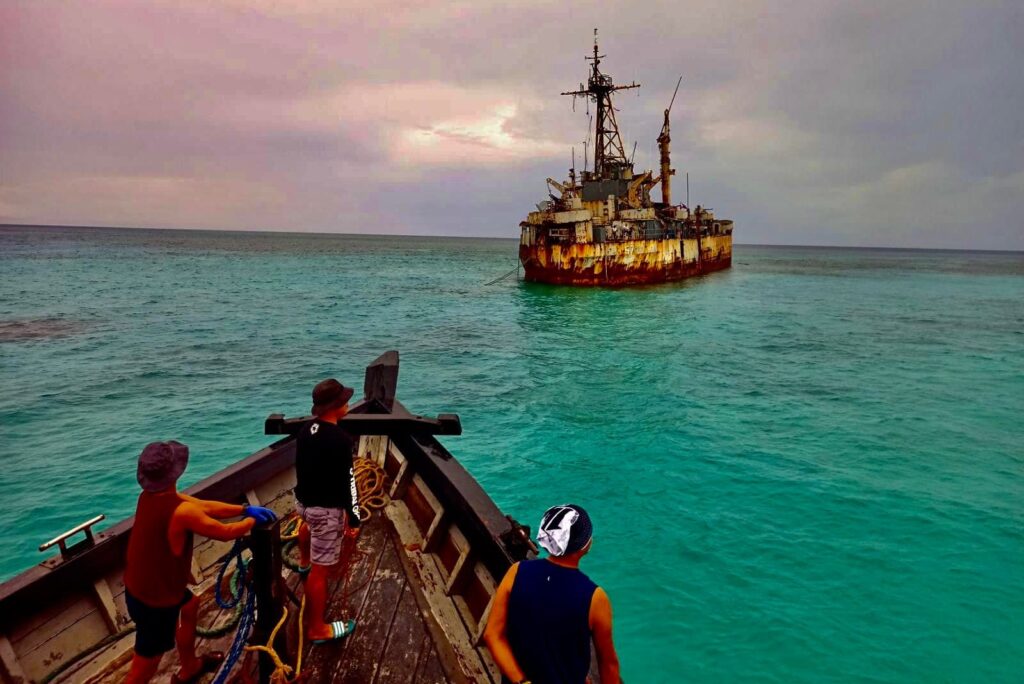
Recent Chinese Coast Guard operations in the South China Sea targeted a Philippine vessel attempting to resupply a remote outpost that has the potential to become the next flashpoint in the region. The Chinese government followed its provocative act with a disinformation campaign designed to coerce the Philippines to recognize Chinese claims of extended territorial sovereignty in the South China Sea.
China claims that the Philippines had previously agreed to remove the Sierra Madre — a false claim the current government has vociferously denied. The Chinese Communist Party’s real intent is to strengthen China’s territorial claims within the Nine Dash Line — the vague, unilateral Chinese addition to maritime charts that purports to extend territorial sovereignty over almost the entirety of the East and South China Seas.
The Sierra Madre was an improvised, temporary solution to a vicious problem. It was intentionally run aground in 1999 to physically demarcate what is already widely accepted — Philippine maritime sovereignty over islands and atolls that many nations claim. As the ship rusts and rots, its physical disintegration is creating significant risk for regional security, its steadily eroding hull an unsettlingly apt metaphor for the tenuous status quo in the South China Sea.
China may feel emboldened to interfere with the ship to stake its own claim to the territory, which raises the prospect of U.S.-Chinese conflict over the outpost. The United States and the Philippines should act before being forced to react to deteriorating conditions aboard the ship. Failure to do so would not only create conditions for loss of Philippine sovereignty, a reenactment of China’s seizure of the Philippines’ Scarborough Shoal in 2012, but could also potentially create a crisis within the bilateral U.S.-Philippine alliance.
The Philippines should remove the Sierra Madre and replace it with a permanent structure manned by combined rotational forces from both the Philippines and the U.S. Marine Corps. Such a forward operating base would be a powerful signal of commitment to the alliance for both nations as well as providing significant improvements in situational awareness for both the United States and the Philippines. By raising the potential costs of interference, a combined outpost might deter future efforts from Beijing aimed at interdicting resupply of Philippine bases in the South China Sea.
A more muscular approach could elicit Chinese escalation, given the Chinese military’s considerable force presence in the area and its pattern of coercion against other South China Sea claimants. But the coercive tactics long employed against littoral states in the region would be less effective against the U.S. Navy, which could dispel the image of Chinese forces enjoying unchallenged dominance in the region while resolving an untenable security situation at Second Thomas Shoal.
The Rapidly Eroding Hull and Status Quo
China’s Coast Guard vessel fired water cannons at Philippine vessels on Aug. 12 2023. This act is not the first of its kind. China’s Coast Guard interdicted Philippine resupply efforts with water cannons and attempts at ramming at Second Thomas Shoal in 2021. It also shadowed and harassed Philippine ships in 2022, 2018, 2014, and 2013. Earlier this year Beijing’s bad behavior made headlines for employing a dazzling laser against a Philippine Coast Guard ship near the shoal.
Manila’s diplomatic response to this most recent encounter was robust and, possibly more importantly, it was backed by unequivocal statements of support from friendly capitols around the world — including from European Union, United States, Australia and Japan. This kind of clear, collective messaging of commitment to international law is important and has been slow to materialize. However, decades of Chinese government misbehavior in the region have underlined the fact that words alone will not inhibit the Chinese Communist Party’s revisionist campaign in the maritime domain.
The BRP Sierra Madre LST-57 was commissioned by the United States during World War II as USS Harnett County. It was donated to the Philippines in 1976 and then intentionally run aground on Second Thomas Shoal (called Ayungin Shoal by the Philippines) in 1999. The Philippines did so following China’s seizure of Mischief Reef (called Panganiban Reef by the Philippines) in 1995. The dispute has been a serious point of contention with China ever since. The vessel is deteriorating and it is only through constant reinforcement and repair that it is maintained in a state even resembling minimum standards for inhabitability. The Second Thomas/Ayungin Shoal is located about 174 nautical miles from Puerto Princesa. The distance allows for China to keep dozens of maritime units in the vicinity while the Philippine Navy and Coast Guard struggle to visit the grounded vessel on a periodic basis.
China’s state and irregular forces have delayed food deliveries for extended periods in the past, forcing the ship’s complement of marines to catch fish to survive. This quasi-blockade is particularly dangerous, given that the ship remains a flagged vessel of the Philippine Navy and as such falls within the publicly recognized protection of the U.S.-Philippines Mutual Defense Treaty.
It would admittedly be far easier to develop a combined U.S.-Philippine presence on one of the Philippines’ other occupied features in the South China Sea, such as Thitu Island where there is an airfield in place as well as a more robust presence. Second Thomas Shoal is the only South China Sea feature occupied by the Philippines that is legally designated as a low-tide elevation, rather than a rock, under the 2016 arbitral award delivered by the International Tribunal for the Law of the Sea’s Permanent Court of Arbitration. Therefore, it is the only feature occupied by Philippine forces that does not generate a 12-mile territorial sea. Given the location of the shoal within the Philippines’ recognized exclusive economic zone and the findings of the 2016 award, the Philippines is well within its rights under the U.N. Convention on the Law of the Sea to maintain a security presence there.
But the issue is that Second Thomas Shoal’s status quo will not endure forever. The ship is rusting and the danger is that China will claim the reef it now sits on once the ship is removed. There is also the possibility that Chinese forces might act unilaterally to remove the hulk from the reef, perhaps under the pretense of protecting the environment. And if the United States and the Philippines wait until the already-dire conditions aboard the ship worsen, or until China decides to act, the alliance’s options for reaction will be far more limited than if Washington and Manila move forward now.
Second Thomas Shoal is, arguably, the Philippines’ most vulnerable outpost. As a result, it has clearly become a priority for China’s pressure campaign in the region. Loss of control there would be akin to allowing a second Scarborough Shoal debacle, which saw Manila lose control of an important feature within its exclusive economic zone (as is Second Thomas Shoal). And, like in the Scarborough Shoal incident, lack of effective U.S. intervention would have long-lasting negative effects on the alliance.
Following the incident on Aug. 12, Beijing’s diplomats have initiated a disinformation campaign claiming that Manila previously committed to removing the rusting vessel from the shoal, which lies within Beijing’s invalidated Nine Dash Line claim extending across the Spratly Islands. The Philippine government has denied the Chinese government’s claims, but as the Sierra Madre slowly crumbles, the risk of Chinese action grows.
Short-Term Escalation for Long-Term Stability
The replacement of the Sierra Madre with a more permanent, improved structure might be challenged by China under the terms of the 2002 Declaration on the Conduct of Parties in the South China Sea. However, any opposition would be performative, rather than formal arbitration, and could be readily dismissed by the Philippine government. First, the Sierra Madre was grounded on the shoal three years before the declaration was signed. Second, the shoal itself was declared a low tide elevation by arbitral tribunal in 2016. The shoal is also located within the Philippines’ 200-nautical mile Exclusive Economic Zone. This means that an observation post would not include any attempt to change the status of a feature, thereby claiming unjustified maritime jurisdiction and sovereignty, which was the case with China’s own island-building campaign. Finally, the sweeping scale of China’s own reclamation and militarism has put it well beyond any reasonable possibility of claiming the moral high ground in the region — the victims of Beijing’s bullying campaign are more than justified in taking necessary measures to ensure their sovereignty and protect their uniformed personnel.
The best structure to replace the Sierra Madre would be a repurposed oil platform, oil rig, or accommodation platform. Development of a combined facility would require a ready-made structure able to quickly replace the Sierra Madre immediately following its removal. Or, alternatively, the new facility could be emplaced as an upgraded living structure for the marines living aboard it, with the Sierra Madre to be disassembled after the new outpost is installed. The depth of the water and the area’s biodiversity would likely necessitate a removal approach similar to the U.S. effort to remove its own grounded minesweeper from Tubbataha Reef in 2013. The removal required contracted support and salvage vessels to cut the stranded vessel into pieces, which were craned aboard and disposed of elsewhere to minimize damage and pollution.
An Expeditionary Advanced Base with Commercial Characteristics
The United States should not follow China’s reclamation strategy because of the damage caused to the environment. From 2013 to 2018, using a fleet of dredging vessels, Beijing ripped apart coral reefs and poured concrete to build its network of artificial island outposts in the South China Sea, a time-intensive approach with extraordinarily destructive impacts on the maritime environment. Using repurposed equipment from the oil and gas industry offers a speedier solution to the issue at hand. It also lessens the environmental damage, all while presenting Beijing with a fait accompli. This approach turns turning the tables on the Chinese Communist Party, which has successfully changed the status quo on its own terms many times before.
There is significant risk that Beijing might physically challenge the emplacement of a platform with elements from its navy, coast guard, or maritime militia. However, the Chinese government’s past bullying tactics have been less effective when U.S. forces are present. For example, during the West Capella standoff in 2020, Chinese naval forces shadowed a Malaysian-contacted drill ship. In response, the United States brought together forward-deployed and homeland-based air and naval units, ranging from strategic bombers to littoral combat ships and submarines, to form a month-long show of force. The intent was to counter Chinese intimidation tactics, which eventually subsided following the U.S. show of force. Beijing has become comfortable bullying its neighbors and has successfully trained others, including the United States, into accepting responsibility for risk. A significant show of U.S. naval and air power during the emplacement of the facility would force Beijing to shoulder risk and be a step toward reversing years of unimpeded aggression.
Maritime industry equipment provides additional advantages on the Second Thomas Shoal. Specifically, the equipment is designed to withstand deleterious effects of prolonged exposure to the elements and to operate in the maritime domain, particularly relevant in this case. These platforms can also be equipped with a helicopter landing area, which would offer another method for transferring personnel, stores, and equipment on a shorter timeline and without crossing paths with the surface vessels of the China Coast Guard. The increased space and dedicated flight operations space would also enable the use of smaller unmanned aerial systems such as Blackjack, Puma, and ScanEagle drones, which are operated by the U.S. Marine Corps and Philippines Armed Forces respectively. And this ability to support the use of small drones would enable more effective unmanned resupply operations, a concept the United States military has been experimenting with within its submarine force since at least 2020.
It is also common for these industrial platforms to be equipped with cranes, which would enable more effective seaborne resupply and recovery of small boats. Of course, even with vertical replenishment made possible this arrangement would not completely eliminate China’s ability to interfere with resupply operations. It is, however, unlikely that Chinese naval vessels would feel as emboldened opposing operations backed by the U.S. Navy, and supporting U.S. troops. Recent events reinforce this logic — the Philippine mission on Aug. 22 that followed the unsuccessful resupply operation was conducted under the watchful eye of a U.S. P-8A Poseidon and was successful in reaching the Sierra Madre with supplies. As rigs are often located in austere locations and are situated far from shore, they also offer safe, comfortable eating and sleeping quarters, reliable communications and power generation, safe storage for consumables, and the ability to distill potable water and treat sewage — all capabilities that would drastically increase the quality of life of those troops based aboard the outpost and add resilience to the combined posture.
There would be a need to upgrade the chosen platform to provide a degree of self-defense capacity and reinforcement, given that its original purpose would not include the need for military standards. However, these platforms are designed to meet rigorous safety standards given the nature of their original mission. Built sufficiently robust to withstand potential explosions, fires, and heavy weather with redundant systems, hardened communications and surveillance systems like closed-circuit television monitoring inside and out, and capable fire suppression systems, a repurposed industry platform would already drastically surpass the safety and self-defense capabilities of the Sierra Madre.
With commercial off-the-shelf radars and small tactical drones, already in use with U.S. Marine Corps units, a combined operating base on Second Thomas Shoal could extend real-time maritime domain awareness for the Philippines in an area where their armed forces have traditionally struggled to maintain an effective common operating picture. Further upgrades could see the addition of more sophisticated electronic intelligence and signals intelligence sensors that would upgrade the intelligence value of the platform for both the United States and the Philippines. And this kind of flexible light footprint operation is exactly what the U.S. Marine Corps is reorganizing itself to conduct within its Concept for Expeditionary Advanced Base Operations, offering the service an opportunity to prove its concept’s viability by executing dynamic deployments to and from the base by air and sea.
There is no denying that this would be a provocative move, and it would not be without significant risk, but as U.S.-Philippine alliance bonds are revived under the Marcos presidency it would be a strong indication of U.S. willingness to shoulder risk in the relationship. Proponents of the alliance in both states have cheered the new era for the bilateral relationship, encouraged by announcements like the opening of four new sites within the Enhanced Defense Cooperation Agreement arrangement. But influential voices within the Philippines, including ex-president Rodrigo Duterte, contend that allowing U.S. operations on the archipelago would make the Philippines a target in a U.S.-Chinese conflict, creating an imbalance in Manila’s risk assessment for limited domestic utility. Co-locating American and Philippine troops at the forefront of the Philippines’ most significant security concern would be a tangible symbol of American commitment in a space in which Manila has long sought clarification of Washington’s policy and interpretation of the Mutual Defense Treaty’s application.
Blake Herzinger is a research fellow in the Foreign Policy and Defence program at the United States Studies Centre at the University of Sydney.
https://warontherocks.com/2023/09/its-time-to-build-combined-forward-operating-base-sierra-madre/






